It seems like putting together the best bug out bag (or B.O.B.) checklist is one of those things that every preparedness website has to do. The thing that other sites often ignore is the fact that everyone has different needs and lives in different environments. This bug out bag is for you and your family!
This article is going to cover everything that we at Ready Lifestyle believe are bug out bag essentials. Then we’re going to give you a range of options to fill those needs. By examining each section, you’ll be able to tailor a kit to meet your needs, no matter what they are, so you have the best bug out bag list that you can put together.
We’ve decided to focus on developing a set of tool to help you put together the best bug out bag for you instead of just giving you a list of what makes the best bug out bag for us.
Who Needs a Bug Out Bag?
I always recommend bugging out only as a last resort, but that doesn’t mean that we shouldn’t be prepared to bug out. With our current political situation, both at home and worldwide, there are any number of possible scenarios that could cause us to have to bug out.
If you live in an urban environment the need for you to have a well thought-out and prepared bug out bag list is even more important. Everyone living in a city or a suburban environment is at an increased risk to experience political and civil unrest, riots and will likely feel the effects of a man-made disaster before those in less populated areas.
This doesn’t mean that those in a rural environment would never have to bug out. Many natural disasters, such as wildfires and hurricanes, could cause those in rural areas to have to bug out. Some people believe that after a disaster, those within the cities will migrate out to the rural areas. If this migration does take place, it’s one more reason for those in rural areas to be able to vacate quickly.
If you aren’t properly prepared and haven’t taken the time to put together a bug out bag, you could possibly find yourself having to evacuate your home at a moment’s notice with no food, no water, and no equipment. By having a go bag ready you ensure that you and your family will always have the minimum gear needed to survive.
We aim to provide you with a sampling of items that we feel would make a good addition to your bug out bag. As with all preparedness topics, you are the only one who knows your situation. You will have to modify the items in each category to best meet the needs of you and your family.
Guidelines for Selecting Items to Put on Your List
When putting items on this list it’s best to include items that have multiple uses. This cuts down on weight and the number of items that you have to buy and carry.
Don’t blindly select the least expensive gear out there. If you see two items that look very similar but have a large price difference, it’s probably because the less expensive item is made with lower quality materials. Of course, this isn’t always the case. Sometimes there are just items that present a very good value to the consumer.
The items on your list should be able to get you through the first 72 hours of an emergency. Some people even go so far as to call this a 72-hour bag. Try to include items that will allow you to survive past the 72-hour mark. Sustainability and reusability are important if we need to bug out.
As an example, putting 72 hours of water in your bag may seem like a good idea, but putting just two or three liters of water in your bag and adding a portable water filter will last you much longer.
Additional Considerations
The climate, season, number of people in your family, etc. will all have an impact on what type of items we need in our bug-out bags. Make sure you take these into consideration when building your go bag.
Military surplus stores make a great place to get a lot of these items. I’d suggest swinging by one in your area and checking it out. They sometimes have great deals on gear that’s hardly been used.
The Ready Lifestyle Bug Out Bag
The Backpack (Grey Man or Tactical)
The base of any good bug out bag is the bag itself. When choosing a bag there are several things to take into consideration.
If you live in an urban environment, choosing a backpack that does not appear tactical can be an advantage. Being able to look like any other person on the street will make you less of a target if you are trying to evacuate a city (or other populated area) on foot. This grey man approach is often the preferred theory for people in cities and those that may be caught in a populated area.
For those of you that live in a rural environment, a tactical pack may serve you better. These backpacks or often designed to effectively carry large amounts of equipment in a compact package. Camouflage patterns will also allow you to blend into your surroundings better.
Regardless of the style of pack you choose, a subdued color is probably the way to go.
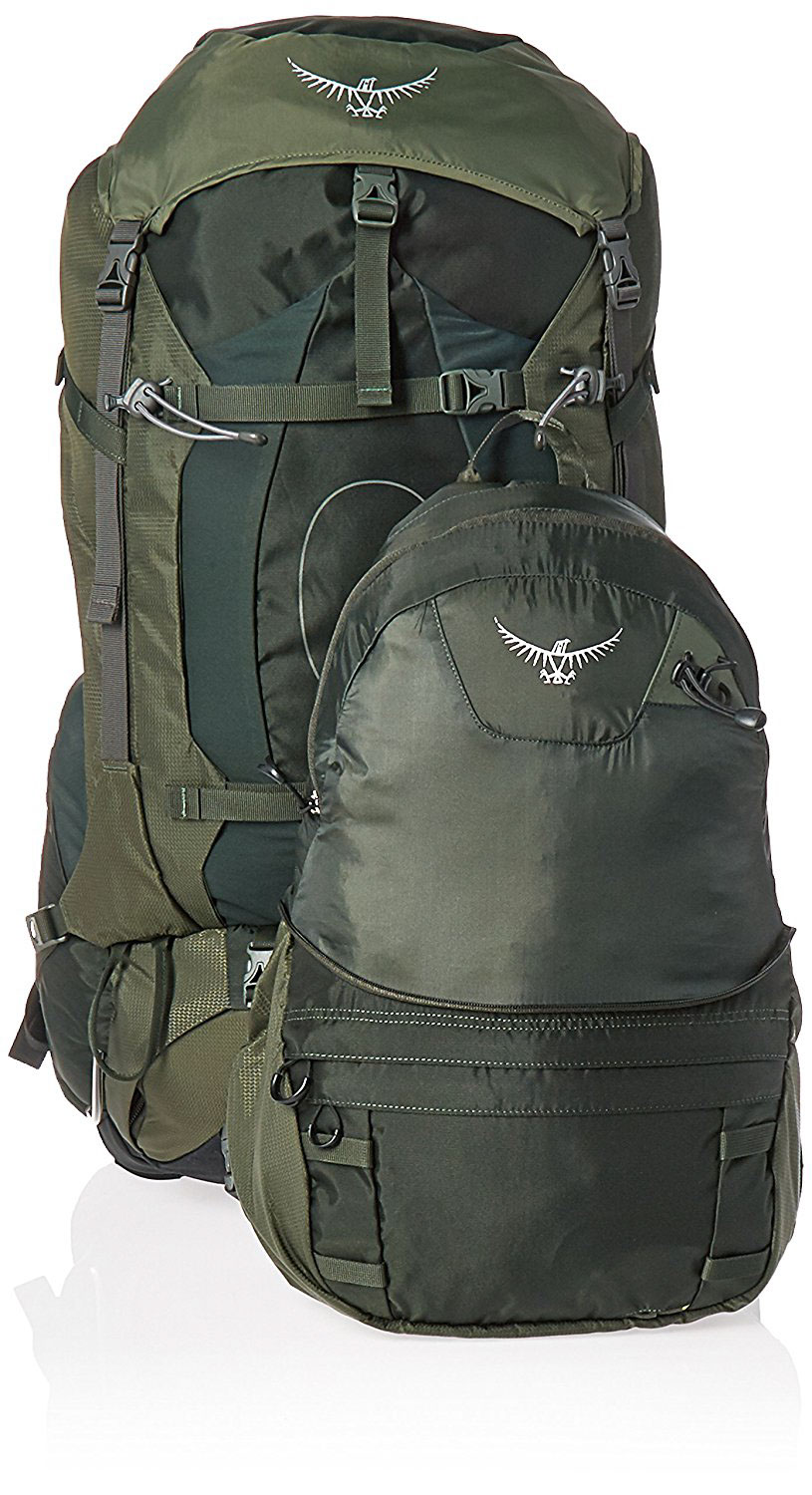
Osprey Aether AG 60
Osprey makes great packs in all colors, shapes, and sizes. This Aether AG 60 is designed for a week on the trail and comes with a removable top lid that can be used as a daypack. The adjustments available with the pack make it suitable as a bug out bag for almost all adults.

Kelty Redwing 44
Kelty is another well-known manufacturer of backpacks. The Kelty Redwing 44 is on what we would call the small side for a full on bug out bag, but it would certainly work. It’s size also makes it less conspicuous compared to other hiking packs that are much larger. A bag like this could be a great bug out bag for an older child.
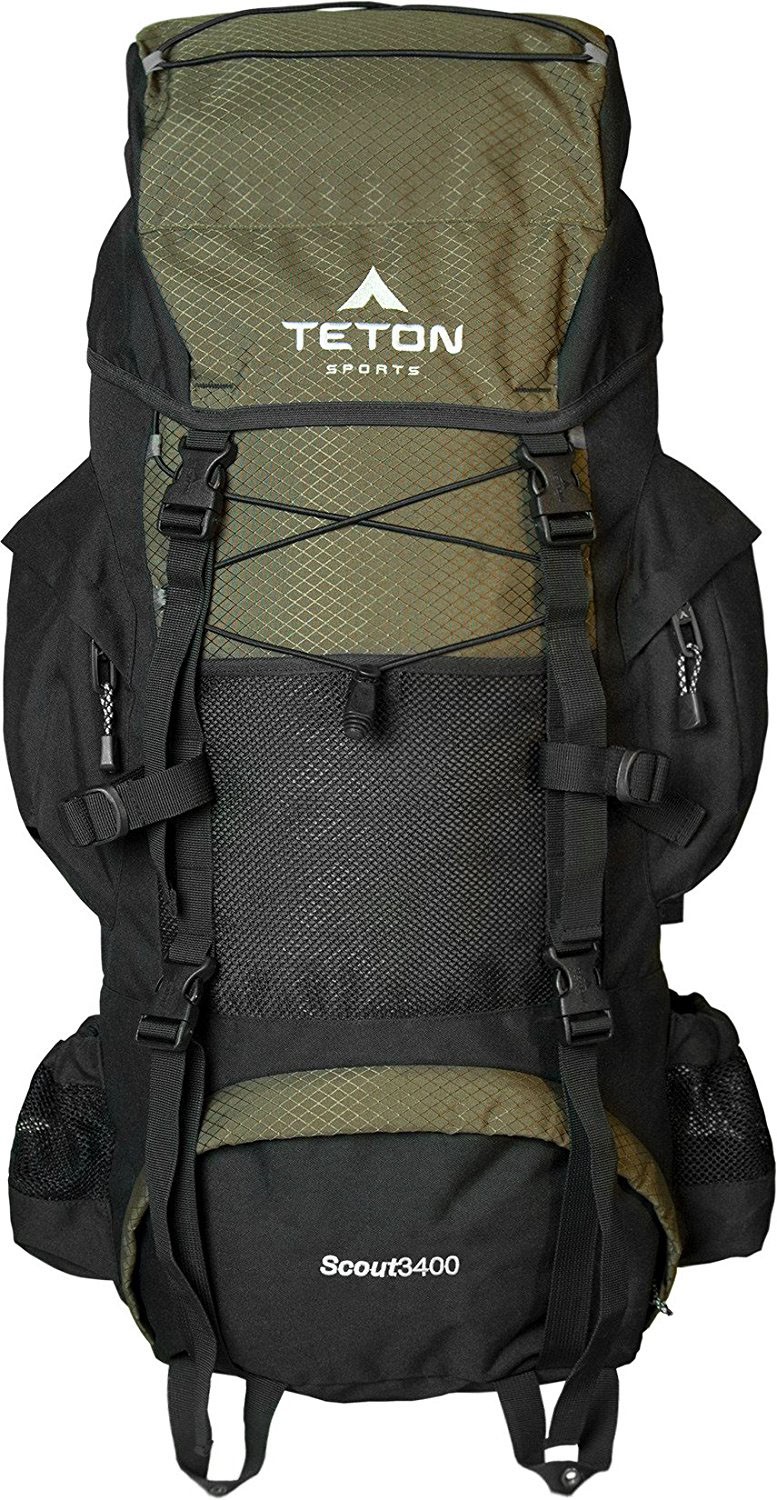
TETON Sports Scout 3400
This Teton pack is 55 liters and is the most affordable pack we’re looking at in this article at right around $60. The Teton Scout 3400 represents a sweet spot for cost, durability, and size. It’s fully adjustable and pretty close in size to the Osprey. Something like this is what I’d recommend to anyone putting together a new bug out bag.
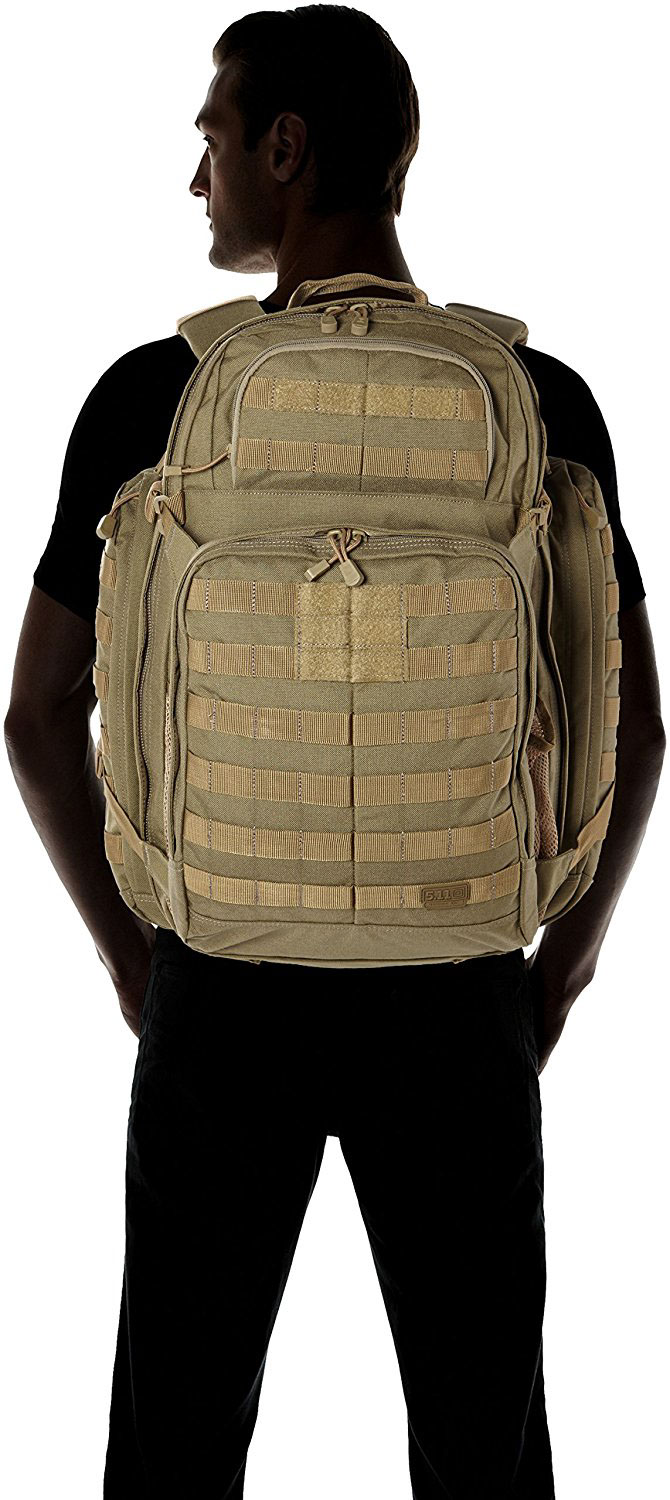
5.11 Tactical RUSH72
About the same size as the Kelty, the 5.11 Tactical RUSH72 has a ton of MOLLE webbing on the outside which allows for expansion if you really need it. Being on the tactical side of backpacks, it’s made of stronger, heavier material than the other packs and comes in several different subdued colors and camo patterns.
If you’re looking to build a more tactical bug out bag, this could be just what you’re looking for.
A lot of people swear by 5.11 products, but I tend to prefer a pack designed for comfort when I intend to wear a pack for days on end. There’s nothing wrong with a pack like this, in fact, this pack has rave reviews on every site I can find. It’s just been my experience that, after a couple days with a pack like this, I’m much more tired than I am with other backpacks.
How to Pack Your Bug Out Bag
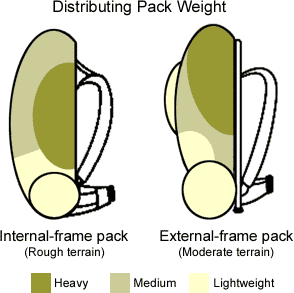
To keep your pack as stable as possible, load the heaviest gear next to your back and centered in the middle of the pack like the drawing above shows. Pack your lightest equipment in the bottom of your pack with the medium weight loaded at the top and outer parts of the bag.
To maximize the amount of gear that you can pack in your bag, fill up items that have empty spaces with other items. As an example, you could put some items in your mess kit and pack your sleeping bag into any open areas around other light gear in the bottom of your pack.
Fill in all empty space and use any internal tie downs to secure your items in place. This prevents the load from shifting in your pack and it will allow you to fit more items into it.
Women and shorter men often find that carrying heavier weight slightly lower in the pack is more comfortable. Heavy items should still be high in the pack, but feel free to adjust your load for your comfort. This is just a general guide, not a hard and fast requirement.
Shelter (Tarp / Tent / Emergency Blanket / Sleeping Bag / Blankets)
Shelter can come in many forms. A lightweight backpacking tent may be the best option for some, for others, a tarp makes more sense as it can be a shelter and has other uses.
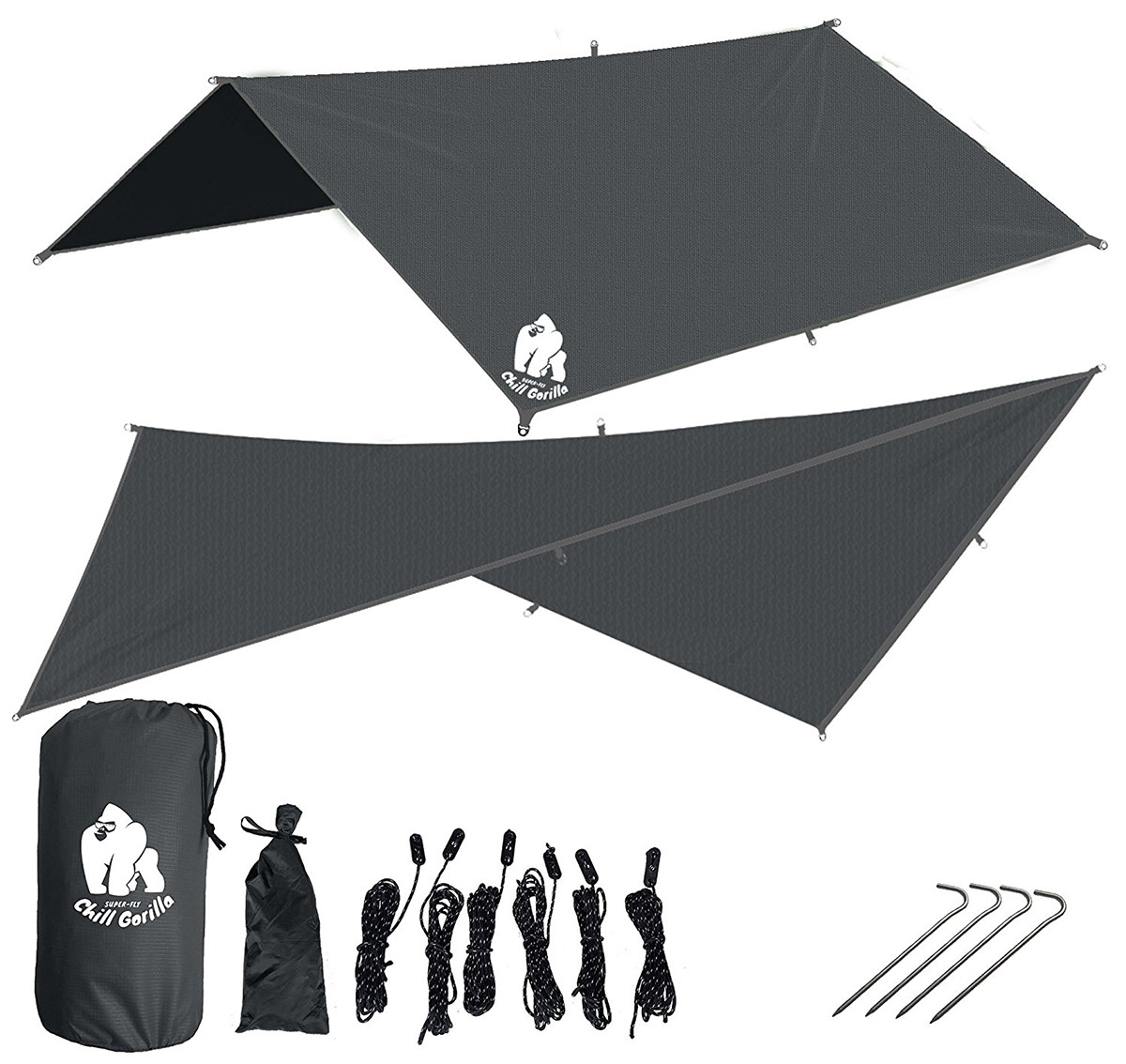
Chill Gorilla 10′ Rain Fly
A purpose made tarp, like this Chill Gorilla 10′ Rain Fly, makes a great shelter. You can also use it to waterproof your pack, collect rainwater, etc. They’re extremely versatile on top of being light and not taking up much space.
A lot of people would argue that a sleeping bag or blankets don’t constitute a shelter. I totally disagree. This list is completely modular. Just because a sleeping bag or blanket roll wouldn’t work for one situation, doesn’t mean that it wouldn’t be great for someone else.
Blankets are also easy to come by and make a really cheap alternative that someone can start with an upgrade from later on.
An old military poncho makes a great makeshift tent and can be used to keep you dry in the event of inclement weather. If you add a poncho liner you have both a blanket and an extra layer that can keep you warm when it gets cold.
For those that are likely to spend any length of time in an urban or suburban area, I recommend picking up Tom Brown’s Field Guide to City and Suburban Survival. The section on shelter building makes it a worthwhile purchase all by itself.
Water (Filtration / Purification / Collection)
Having a steady supply of water will be one of the things that you battle with first. The problem with water is that it’s heavy and takes up a lot of room.
With that in mind, we always recommend having some form of portable water filtration system as well as several collapsible water containers on your bug out bag list. Keep these containers full of water so you have something to drink when you first bug out.
Then, as you empty the water containers you can refill them with water that you gather along the way.
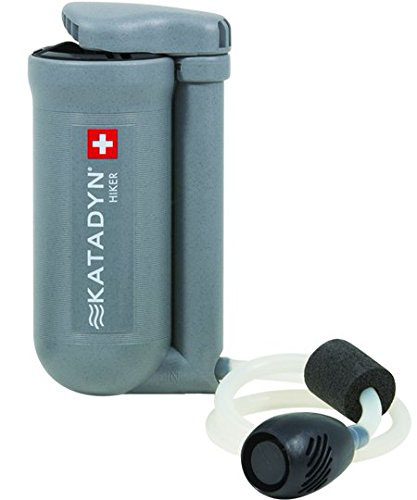
Katadyn Hiker Microfilter
The Katadyn Hiker Microfilter is one of the best handheld water filters available. It’s a little on the expensive side, but you get what you pay for. Something along these lines is important for any survival situation.

Nalgene Collapsible Wide Mouth Cantene
Collapsible canteens are nice because you can roll them up when they’re empty to save space. I like these Nalgene Canteens because you can stand them up when they have water in them. Not all of the collapsible canteens I’ve used will do that.
You can also add water purification tablets, or chemical disinfection kits since they take up very little room.
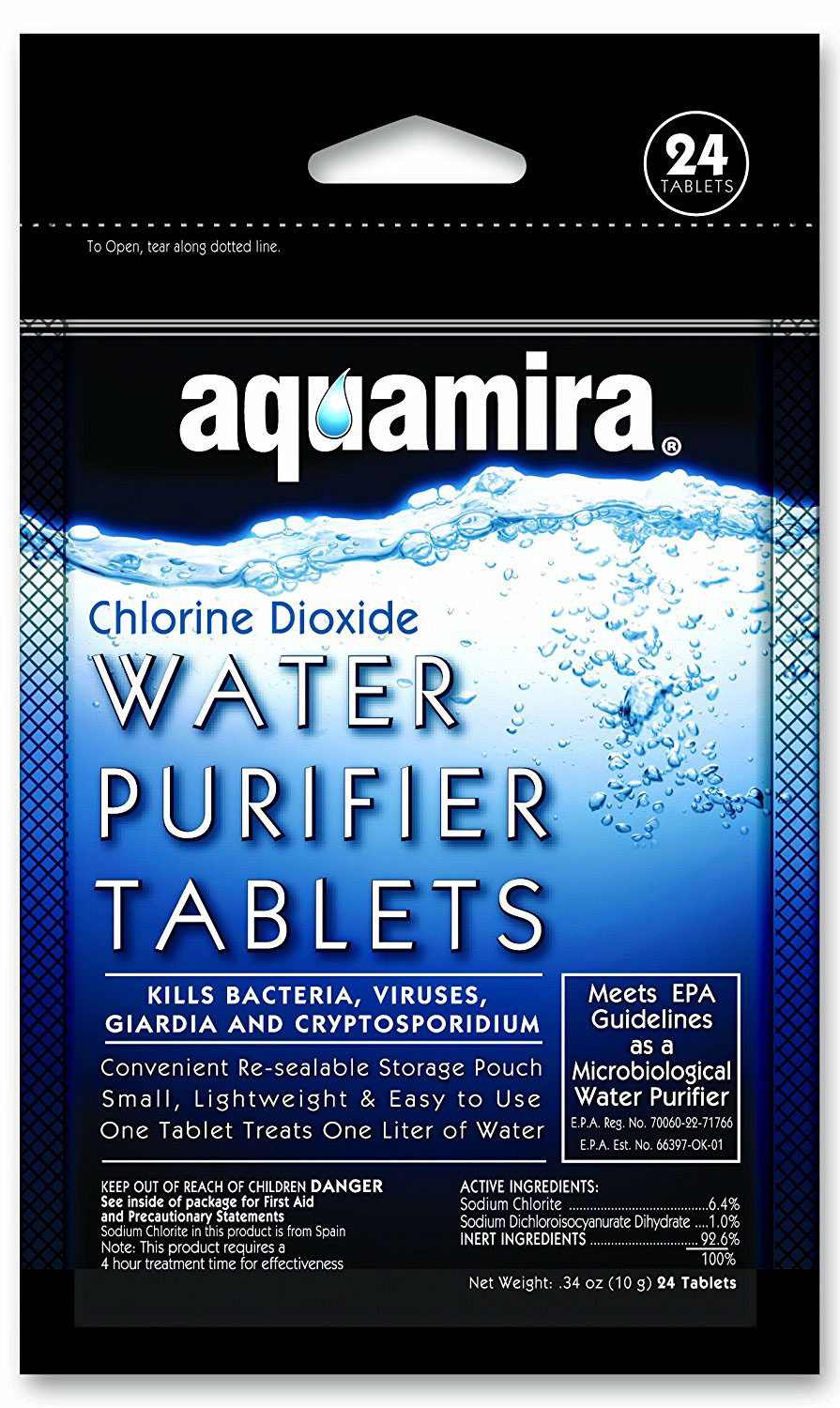
Aquamira Water Purification Tablets
Aquamira makes several types of water purification chemicals. These water purification tablets would be a good addition to any go bag as a backup to other water collection tools.
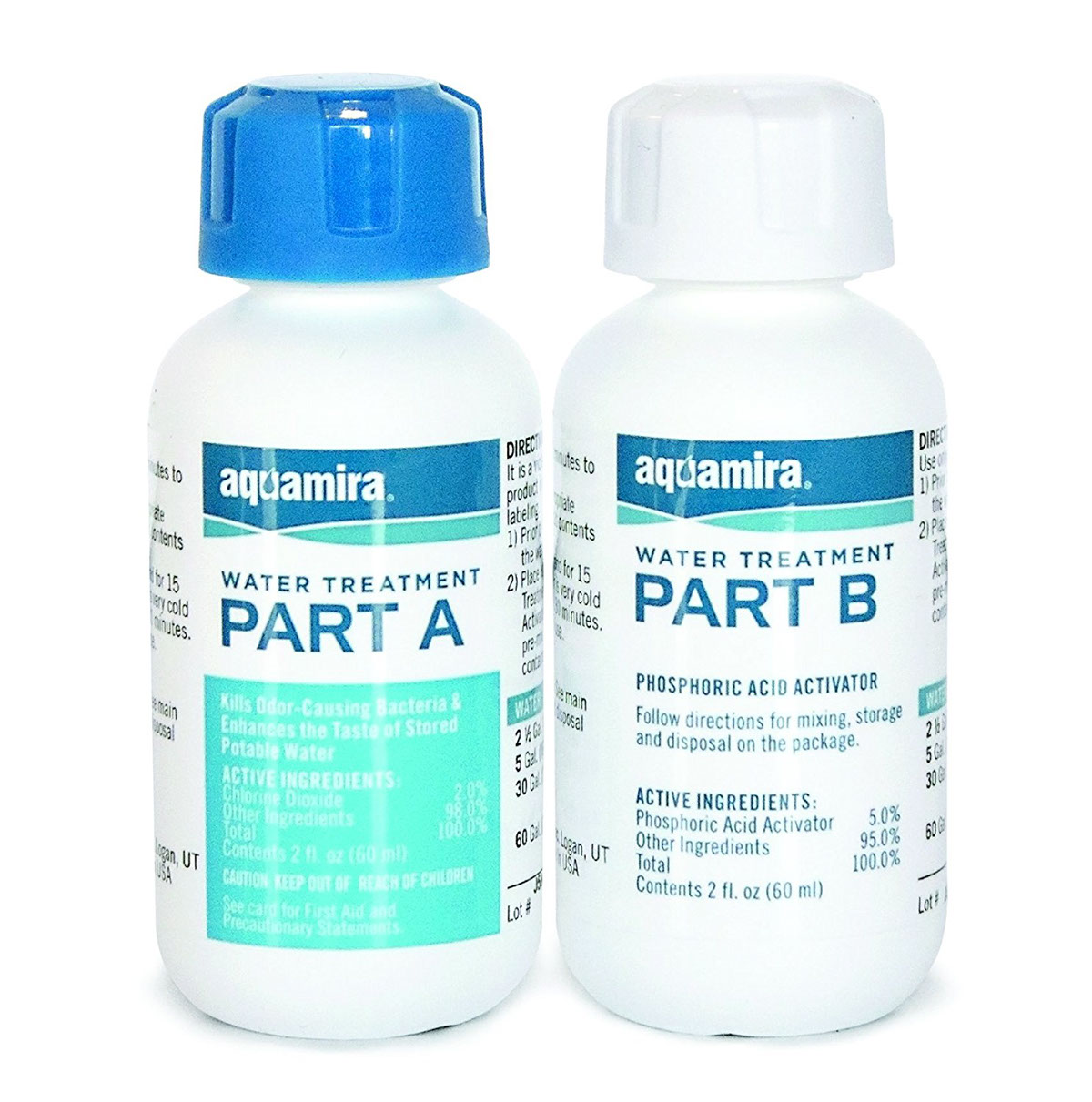
Aquamira Water Treatment Kit
This Aquamira Water Treatment kit can treat up to 60 gallons of water. That’s far more water than you could ever carry in a bug out bag!
You’re going to want to filter the water through a cloth (or a similar item) to remove any large particulates before you treat it.
If you’ve included a mess kit or metal container of some kind, you can use that to boil water for an additional means of getting clean drinking water.
Food (Freeze Dried Food / MREs / Ration Bars / Mess Kit / Utensils / Stove)
The type of food that you bring will depend upon your environment.
Freeze dried food weighs very little but takes a lot of water to rehydrate and cook. It probably makes sense for you to include freeze dried food if you live in an area that has a lot of natural bodies of water.

Mountain House PRO-PAK
The Mountain House Pro Pak is designed with backpackers in mind. Each pack is one meal and comes vacuum packed to be as light and compact as possible. They come in a wide variety of flavors, so anyone should be able to find something they would enjoy.
If you live in a very arid environment or an area that doesn’t have a lot of natural water, such as a city, then packing food that doesn’t need to be rehydrated in your bug out bag makes sense. You just need to be aware that it’s going to weigh more and plan accordingly. MREs and canned food could be options as well as food ration bars and things like tuna and chicken packets.
If you choose to put canned food in your bug out bag (which I don’t recommend) make sure you have a lightweight can opener like a P-51 or a multi-tool.
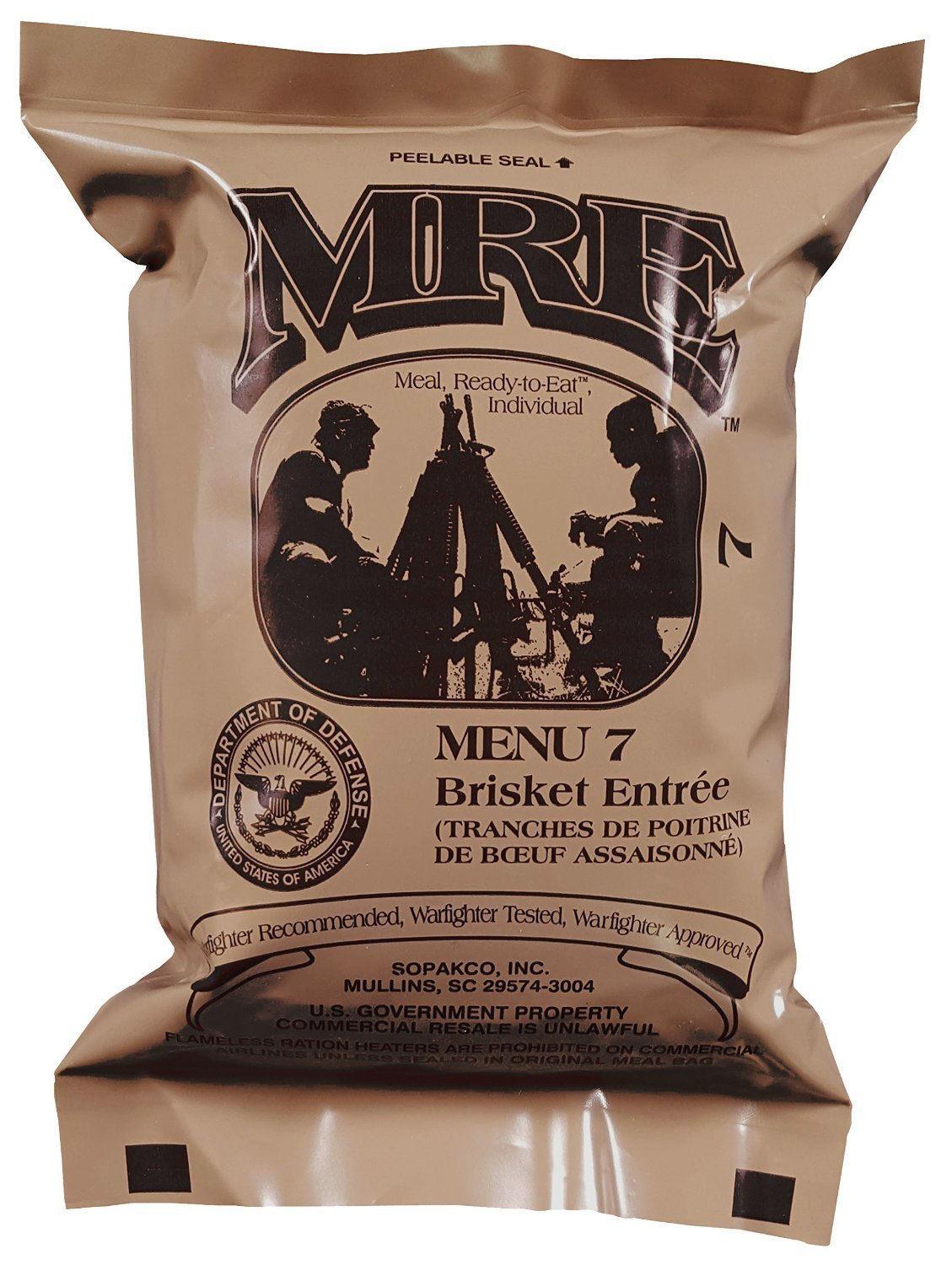
Military MREs
MREs are a great choice for an all in one meal that can be prepared with no outside equipment. If you decide to go with MREs you can strip them down and take out anything that you will not need. Take the food out of the boxes, remove the heaters (you could reuse them as a makeshift warmer if you live in a cold environment), get rid of the extra spoons, etc.
When you’re done, reseal the plastic bag with a piece of duct tape. You’ll basically cut their bulk in half! Once an MRE is broken down like that, it makes more sense to include them anywhere that long shelf life, quickly prepared food is needed.
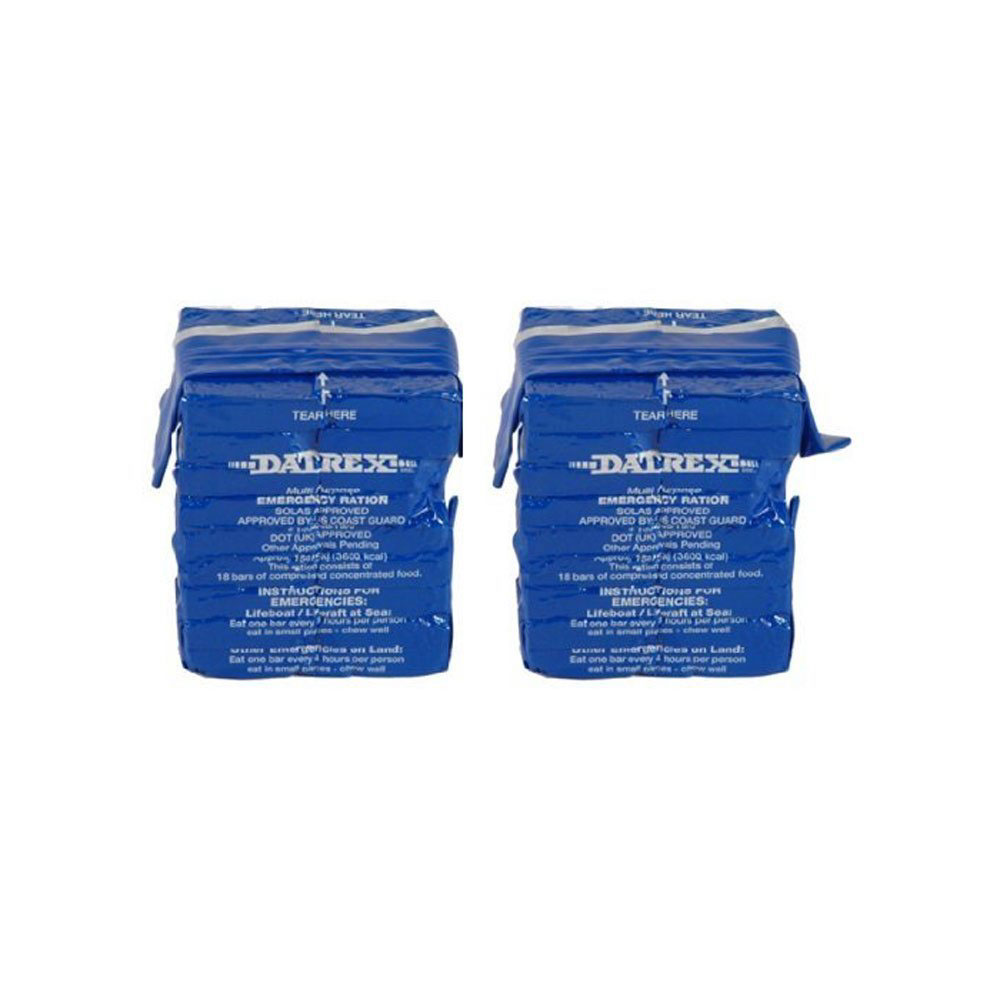
Datrex Emergency Food Bars
Datrex Emergency Food Bars are another option. They aren’t great, but they’re calories, take up very little space in a bug out bag, last for a long time and don’t need to be prepared.
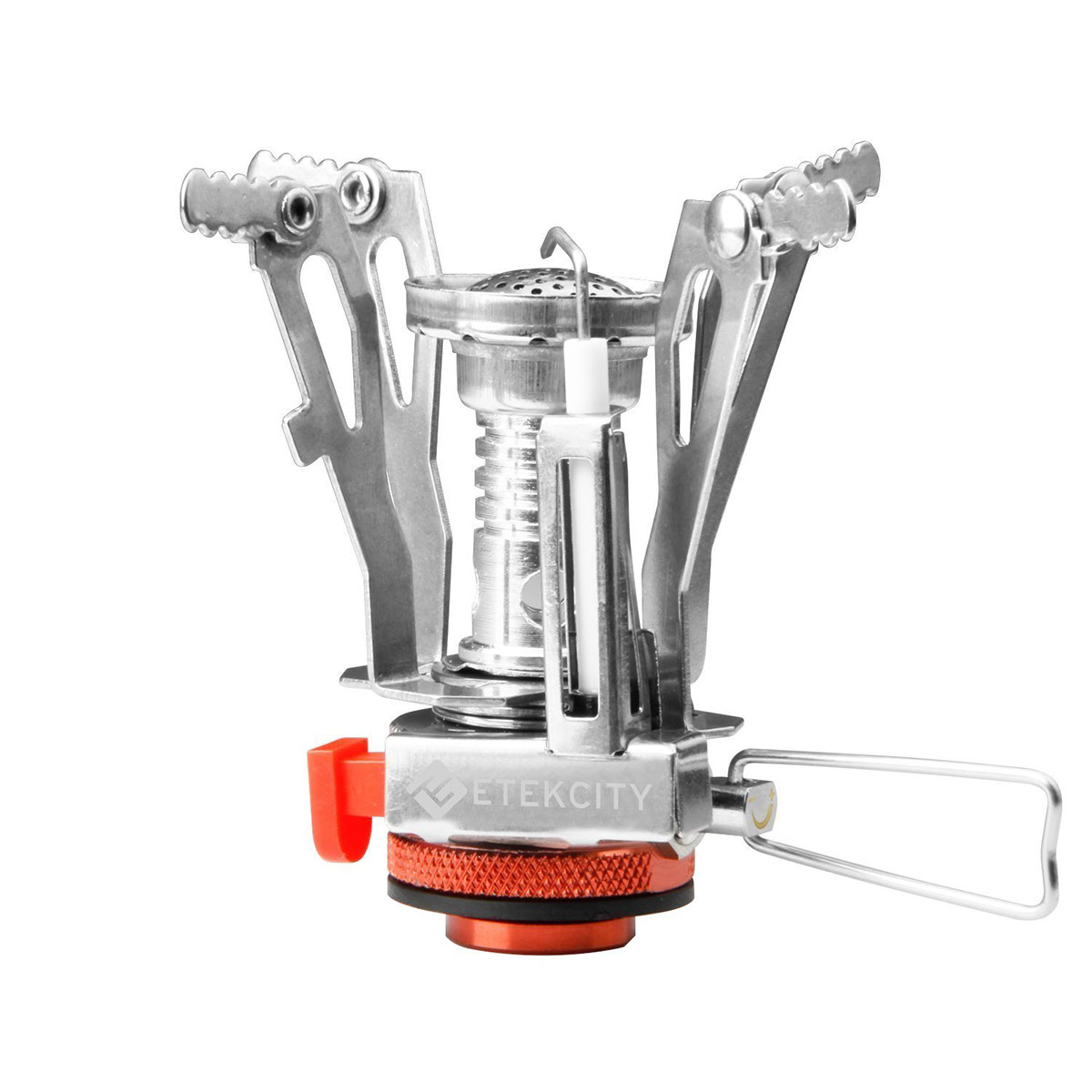
Etekcity Ultralight Backpacking Stove
A lightweight stove like this Etekcity Ultralight Backpacking Stove takes up almost no space. They’re actually smaller and lighter than the fuel.
You may also want to pack a mess kit and some eating utensils in your bug out bag.
Clothing (Rain Gear / Hat / Socks / Underwear / Footwear)
The amount of clothing that you need to put in your bug out bag is minimal. When you’re determining what to pack, try to keep it light and non-bulky. In the end, you just need something to protect you from the environment that you’re likely to encounter.
Packing light rain gear is always a good idea. Heavy-duty trash bags can be used as makeshift rain gear and have many other uses. If you used a poncho as your shelter, you’re already good to go with rain gear.
You should have several changes of socks and underwear. This will let you change out the articles of clothing that come in direct contact with your body preventing chafing and blistering which can lead to discomfort and eventual infection when walking long distances. Keeping your feet dry on a long trek is one of the things that you should prioritize if you have to bug out.
If you live in a cold environment or an environment that has multiple seasons you will need to pack clothing accordingly. If your area has multiple seasons, I would suggest changing your loadout based on the season.
If you don’t want to be bothered with changing the clothing in your go bag every few months then you should pack warm clothing that is both light and non-bulky. Modern synthetic materials make this very possible. Carrying too much is better than freezing to death when you have to bug out with your summer clothing in the middle of winter.
Packing your clothes in one or more Ziploc bags will help keep them dry and give you another bag that you could use later on.
Make sure you keep a pair of broken-in hiking boots or sneakers on or close by, your bug out bag. This will allow you to just grab your bag and change out your shoes. If something happens on your way home from work, you don’t want to be stuck walking around in dress shoes.
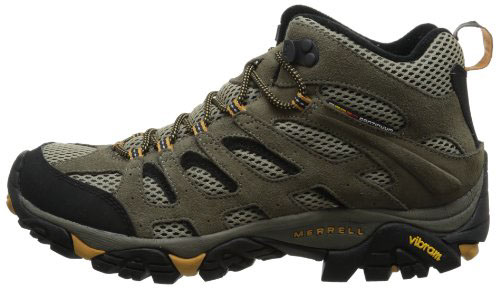
Merrell Men’s Moab Ventilator Mid Hiking Boot
The original Merrell Moab Mids are still among my favorite hiking boot.
Making sure your footwear is broken in is key. I can’t tell you how many times I’ve seen people put brand new boots on prior to heading out on a patrol and return back to the FOB with bloody, blistered feet. In a bug out scenario, blisters will slow you down considerably and possibly even leave you unable to walk. This will be even more apparent when you have the weight of your bug out bag on your shoulders.
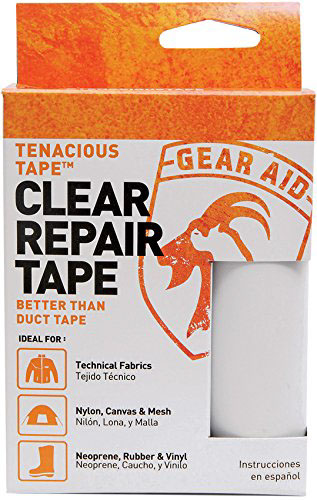
Gear Aid Tenacious Tape
Gear Aid Tenacious Tape is an interesting product that could come in handy in a pinch. It’s specifically designed to seal leaks, rips, and tears in rubber, nylon, canvas and synthetic materials. This could easily find itself on almost everyone’s bug out bag list.
Light (Flashlight / Headlamp)
A flashlight or headlamp is a necessity. A headlamp allows you to use your light source with both hands-free and is always a great option for any bug out bag.
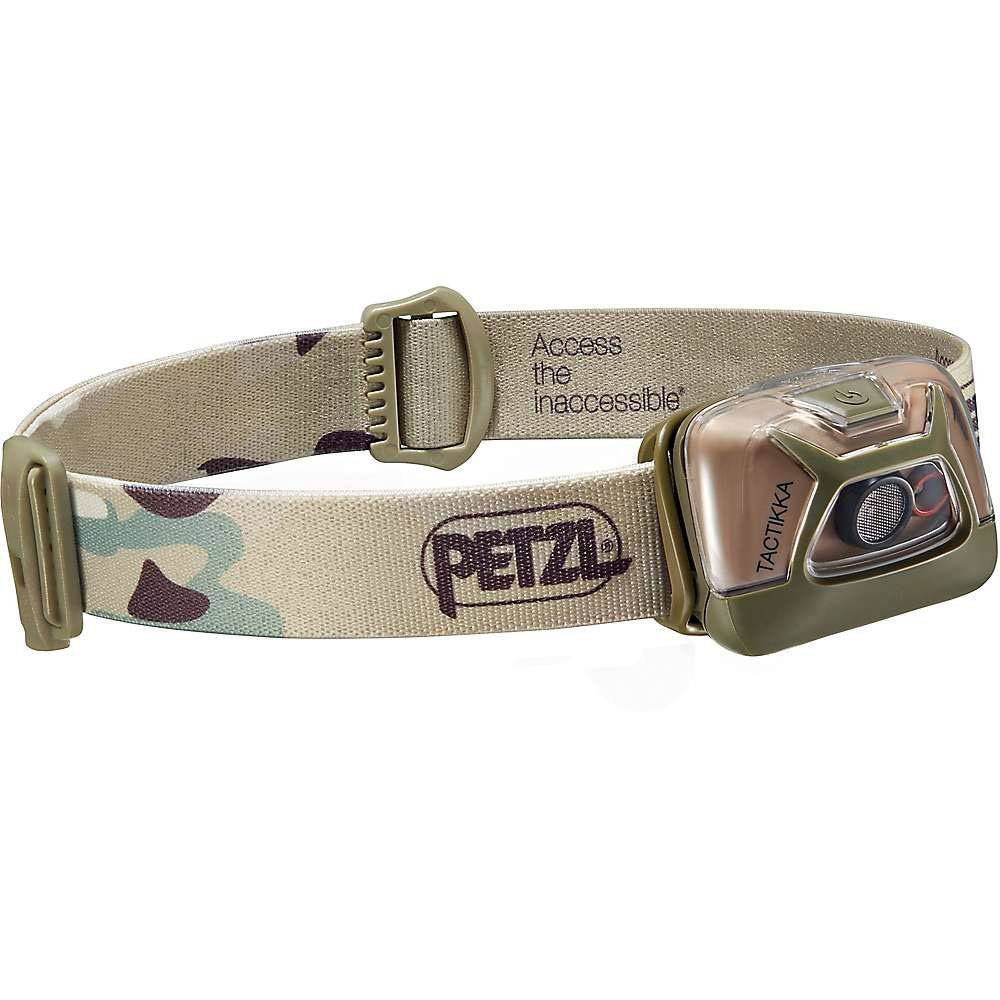
Petzl Tactikka Headlamp
The Petzl Tactikka Headlamp has white light, strobe, and red light options. The strobe isn’t important but if you need to be tactical the red light will be.
You also may want to consider something like a small LED Lantern or glow sticks to act as an area light at night.
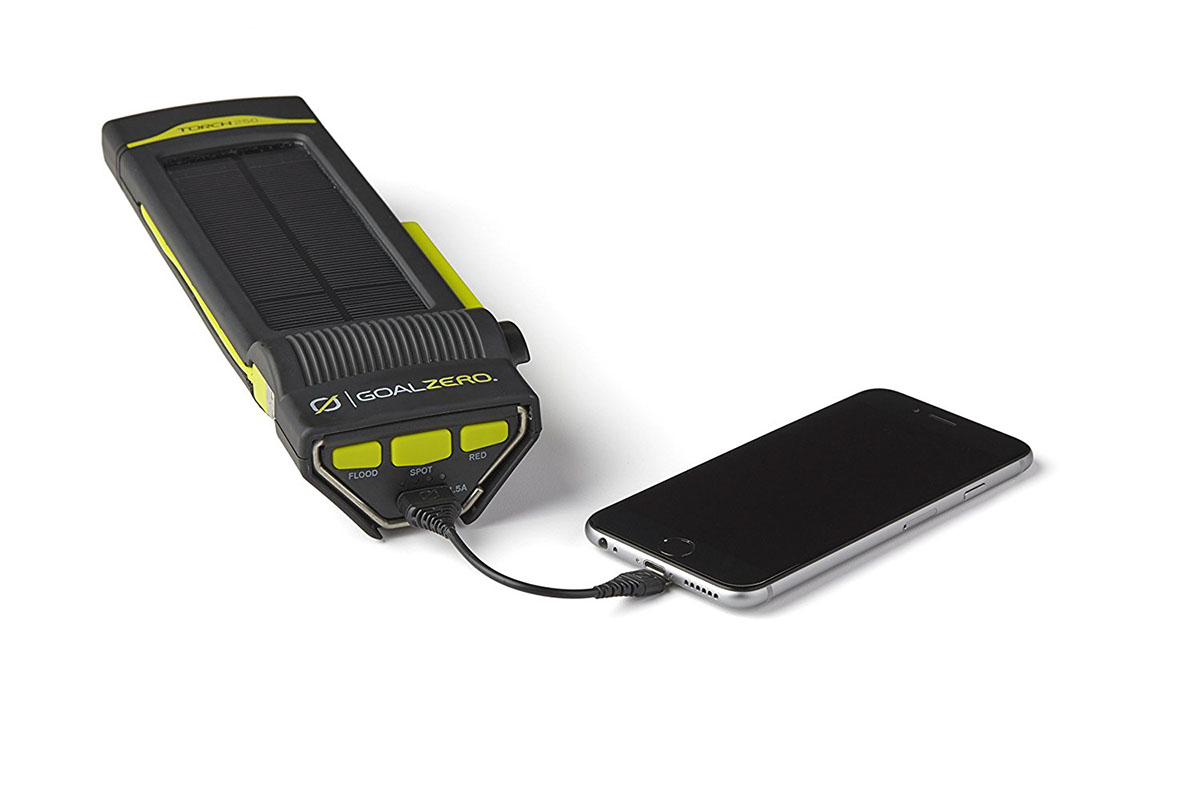
Goal Zero Torch 250 Flashlight with Integrated Solar Panel
I’m a big Goal Zero fan. The Torch 250 is a great little area light that has a solar charger on one side and lantern on the other side. It also has a USB port that you can use to charge electronics and it can be charged from a USB port or a hand crank on the side.
Hygiene (Soap / Toothbrush / Toothpaste / Toilet Paper / Baby Wipes)
Make sure you don’t overlook personal hygiene items. You need to be able to keep yourself clean especially if you end up living out of your bug out bag for more than a couple days.
Normally a toothbrush, toothpaste, baby wipes, and a bar of soap will be enough to keep you clean. If you won’t have access to an outdoor water supply then you should consider packing more baby wipes and leaving the bar of soap at home.
A roll of toilet paper doesn’t weigh much, but it can take up a lot of space. If you run into this situation you can remove a portion of the toilet paper from the roll and put it in a Ziplock bag to save space or just smash the whole roll flat and put it in a Ziplock bag.
Toilet paper isn’t a necessity, but it certainly makes things a lot nicer if you have some!
Make sure you pack feminine hygiene products if you or a family member need them.
Defense (Pistol / Rifle)
Being able to defend yourself is extremely important in a bug out situation. What you decide to bring with you to defend yourself is going to depend upon where you live.
If you live in a rural environment then some form of light semi-automatic rifle is going to suit you best. I personally prefer an AR-15 but an AK-74 or 47 would be a good option as well. Having a rifle will also allow you to take game if it presents itself while you’re moving from point A to point B.
In my mind, a rifle should be the first weapon you reach for in any bug out situation. Even if you’re in the city, a short barreled AR-15 pistol is a much better choice than a pistol in all ways other than concealability.
A pistol can be your best bet if you’re bugging out from a city or suburban environment. This allows you to conceal your firearm, drawing less attention to yourself. If you’re not concerned with drawing attention to yourself then a rifle is a better all-around choice.
My preferred pistol is a compact 9mm like the Glock 19 or M&P 9C. For me, they’re the best compromise between capacity, caliber, and concealability.
Two extra magazines are probably enough, but that is up to you to decide for yourself. Adding more ammo to your bug out bag will allow you to protect yourself for a longer period of time, but the weight of ammo adds up fast so keep it to the minimum you think will get you by.
Fire Making (Disposable Lighter / Ferrocerium Rod / Waterproof Matches)
Being able to make a fire is important for a number of reasons. It allows you to cook, sterilize water and can keep you warm at night. A good fire can also provide a great motivation boost when you’re cold and wet.
One of the best fire making devices available to anyone is a simple Bic disposable lighter. They’re inexpensive, light and readily available almost everywhere. Any bug out bag list should have a few. Extra lighters would also make a good barter item.
Other than several disposable lighters you should consider packing a windproof lighter, ferrocerium rod, or waterproof matches.
First Aid Kit
A good first aid kit is an absolute necessity. Make sure you don’t skimp in this area. You can stop by our article on how to stop bleeding if you need a refresher on how to use these items.
The list below is what I consider a minimum for a bug out bag first aid kit:
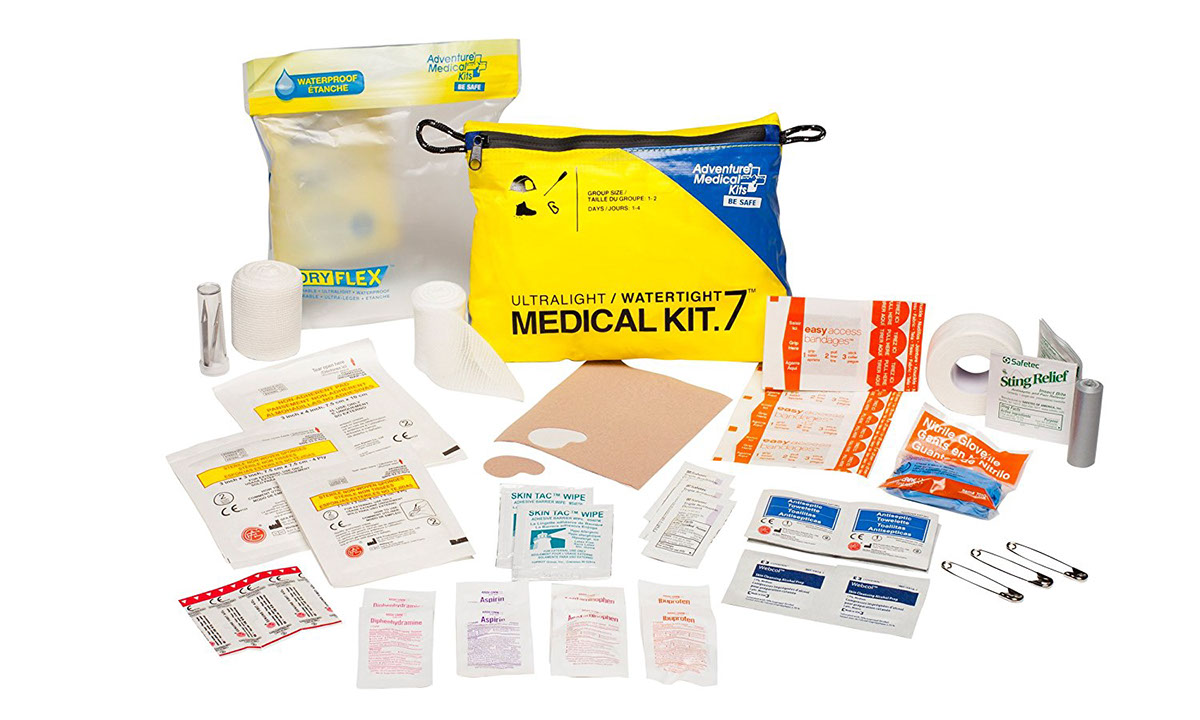
Adventure Medical .7 First Aid Kit
For normal cuts and scrapes, the Adventure Medical .7 First Aid Kit is great for its small size and the quality of the materials they pack in it. This kit will provide the base for the first aid kit on your bug out bag list.

Adventure Medical Kits Professional Trauma Pak with QuikClot
The Adventure Medical Trauma Pak comes packed in a single compact bag and covers most of what you need to stop a heavily bleeding wound. It’s only missing a tourniquet and a pressure dressing.

Ever Ready Battle Dressing
Adding an Ever Ready Battle Dressing (AKA Israeli Bandage) to your go-bag fills one of the gaps in the Adventure Medical Kit. Israeli Bandages are a great dressing, just make sure you understand how it works. If your first time seeing it when you need to use it, then it can be a little confusing. Watching this quick YouTube video on the subject and you’ll be up to speed without having to open yours.
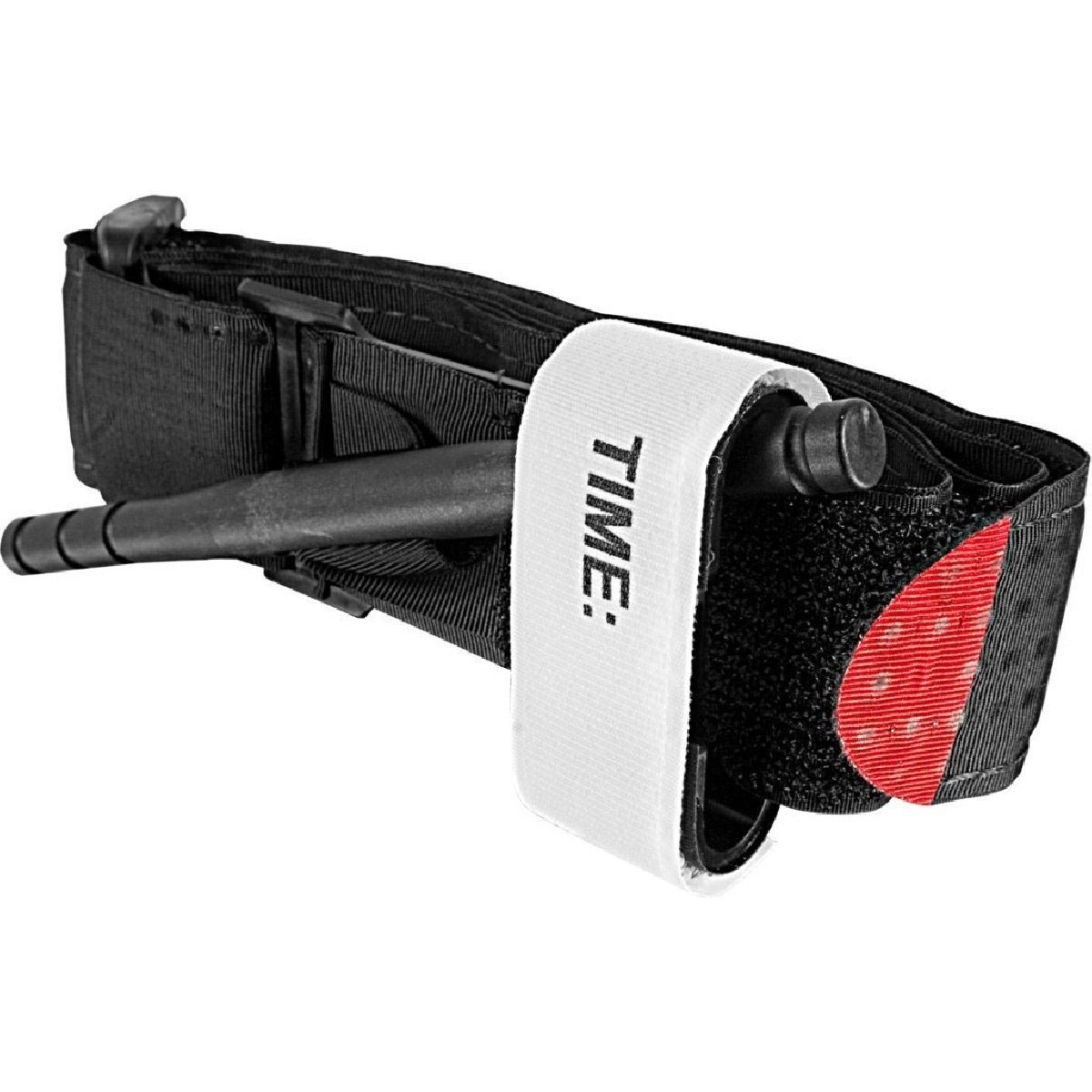
North American Combat Application Tourniquet
The Combat Application Tourniquet is a standard when it comes to tourniquets.
Tourniquets are a bad word in a lot of communities. DO NOT BE AFRAID TO USE ONE! I say that all the time and I’m going to keep saying it until everyone understands that putting a tourniquet on someone doesn’t mean they’re going to lose a limb.
For severe bleeding that you cannot stop, or you can tell from the outset that you will not be able to stop, this is a lifesaver. I don’t consider a first aid kit complete unless it has at least one tourniquet in it, preferably more. I suggest putting more in your bug out bag if you believe you could sustain injuries on multiple limbs at once.
Cordage (Paracord (550 Cord) / Rope)
Some form of cordage should be included on your bug out bag list. Normally the go-to item for this is paracord. It’s light, doesn’t take up a lot of room and the inner threads can be removed from the outer sheath making, even more, cordage if needed.
25-50 feet should be good enough. Make sure you spool it around something so it doesn’t get tangled in your bug out bag.
Fire Cord is a newer invention that I’ve started carrying in my B.O.B. It has all the strength of regular 550 cord, but it also has a flammable fire starter core that makes getting a fire going really easy.
Knife / Axe
A quality fixed blade survival knife should also be part of your bug out bag. Fixed blade knives are normally stronger and have better handles than folding knives. They tend to be better suited all around for survival situations.
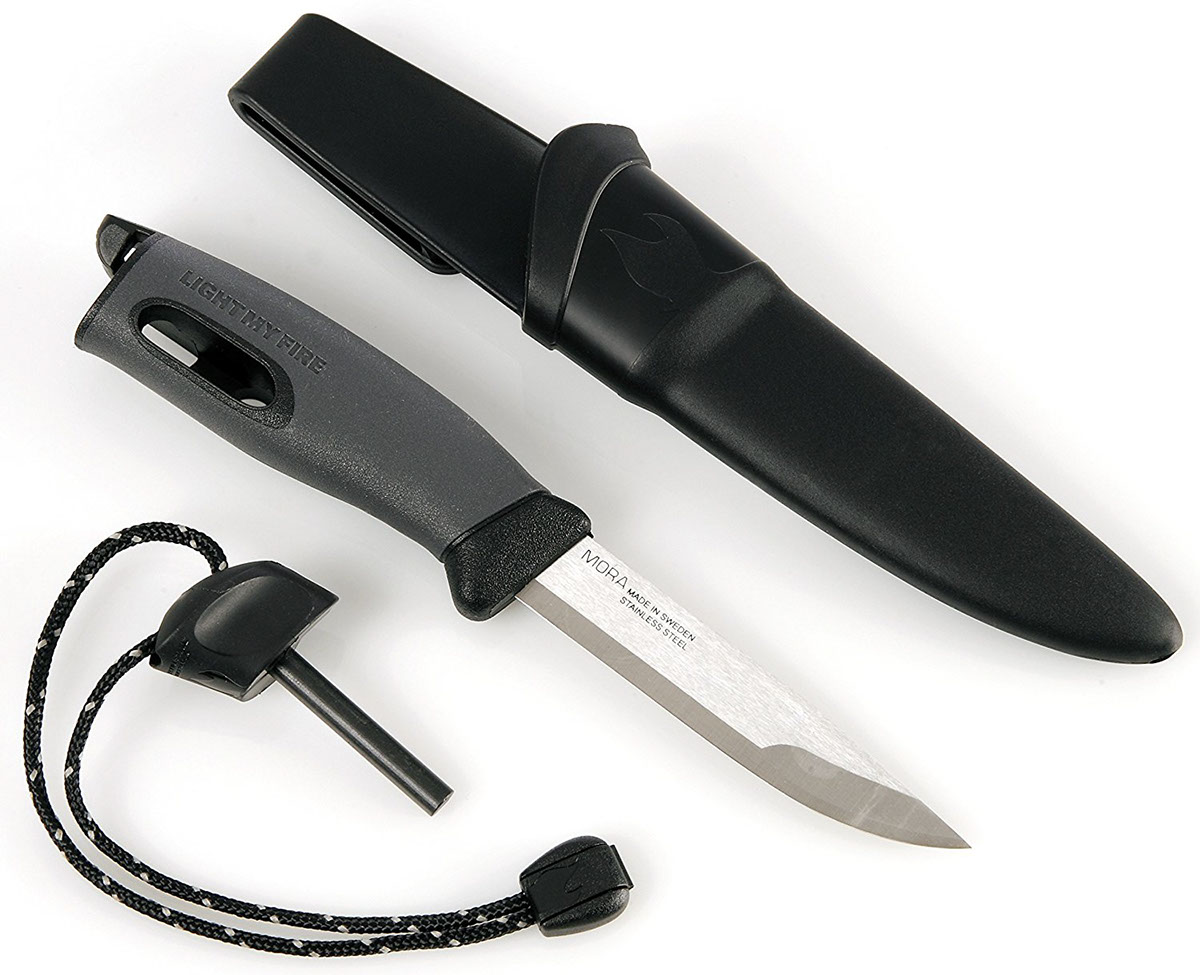
Light My Fire Swedish FireKnife
The Light My Fire Swedish FireKnife is a normal Mora knife with a ferrocerium rod in the handle. This is my go-to for bug out bag loadouts.
One thing that many people often overlook is the advantage that a small lightweight survival axe provides. A hatchet is great for all kinds of things from making and pounding in tent stakes to processing firewood. In many situations, a quality hatchet can be substituted for a survival knife. There is little that a hatchet can’t do that a knife can and there are tons of things that a knife can’t do at all that is easy for an axe.
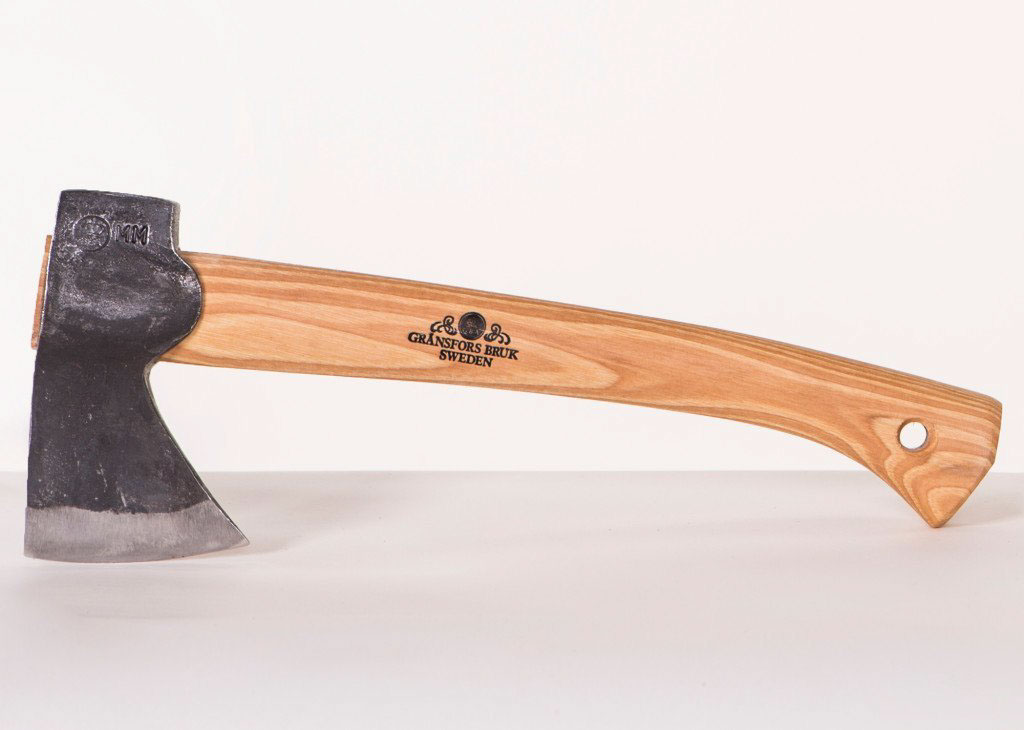
Gransfor Bruk Wildlife Hatchet
A lot of people think the idea of a survival axe is crazy, or inefficient. This is the Gransfor Bruk Wildlife Hatchet. It’s just over a foot long at 13″ and has a 1 lb. 3″ blade. The entire thing is under 1.5 lbs!
Gransfor Bruk is my go-to company for all axes now. They’re beautiful, handmade tools that have a 20-year warranty. When I have this hatchet with me I almost never reach for a knife! I’ll stop geeking out over a hatchet now, but before I go on I just want to say they’re worth every penny and make a great addition to any survival kit. Check out our Gränsfors Bruk Wildlife Hatchet review here.
Be sure check out our article on the importance of including a survival axe in your bug out bag.
Navigation (Compass / Maps / GPS)
Laminated maps of your local area, as well as a compass and a GPS, will allow you to find your way. Make sure you practice with the compass and understand how to use it! When you’re trying to navigate during a bug out situation it’s not the time that you should be first pulling out your compass.
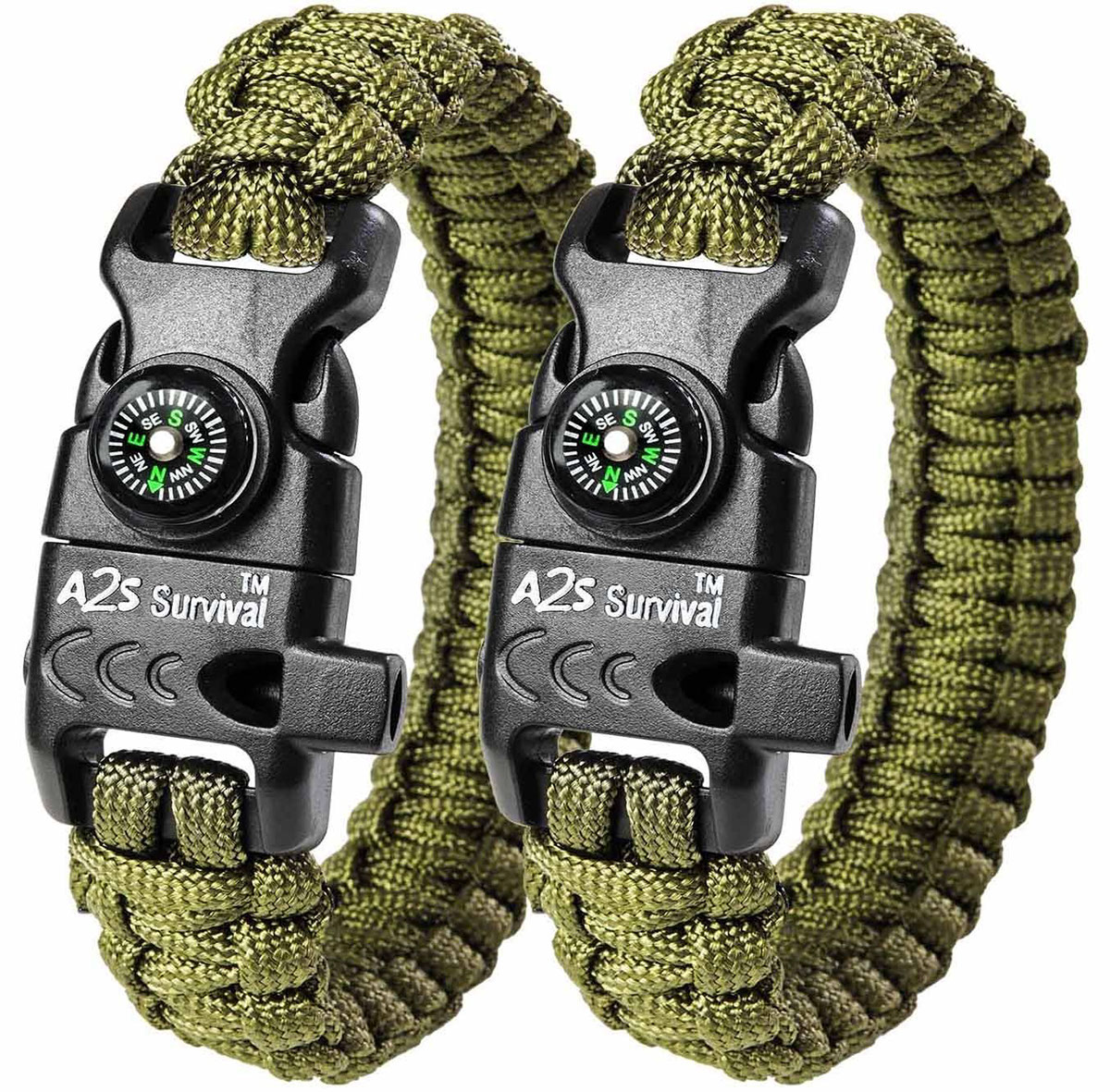
A2S Paracord Bracelet K2-Peak
A normal lensatic compass is going to be the best for true navigation. These survival bracelets would be a good backup for that compass and they have a fire starter and 550 cord.
Most of the time I look at survival bracelets as more of a novelty item. They’re really one of those things that you don’t appreciate until you need them.
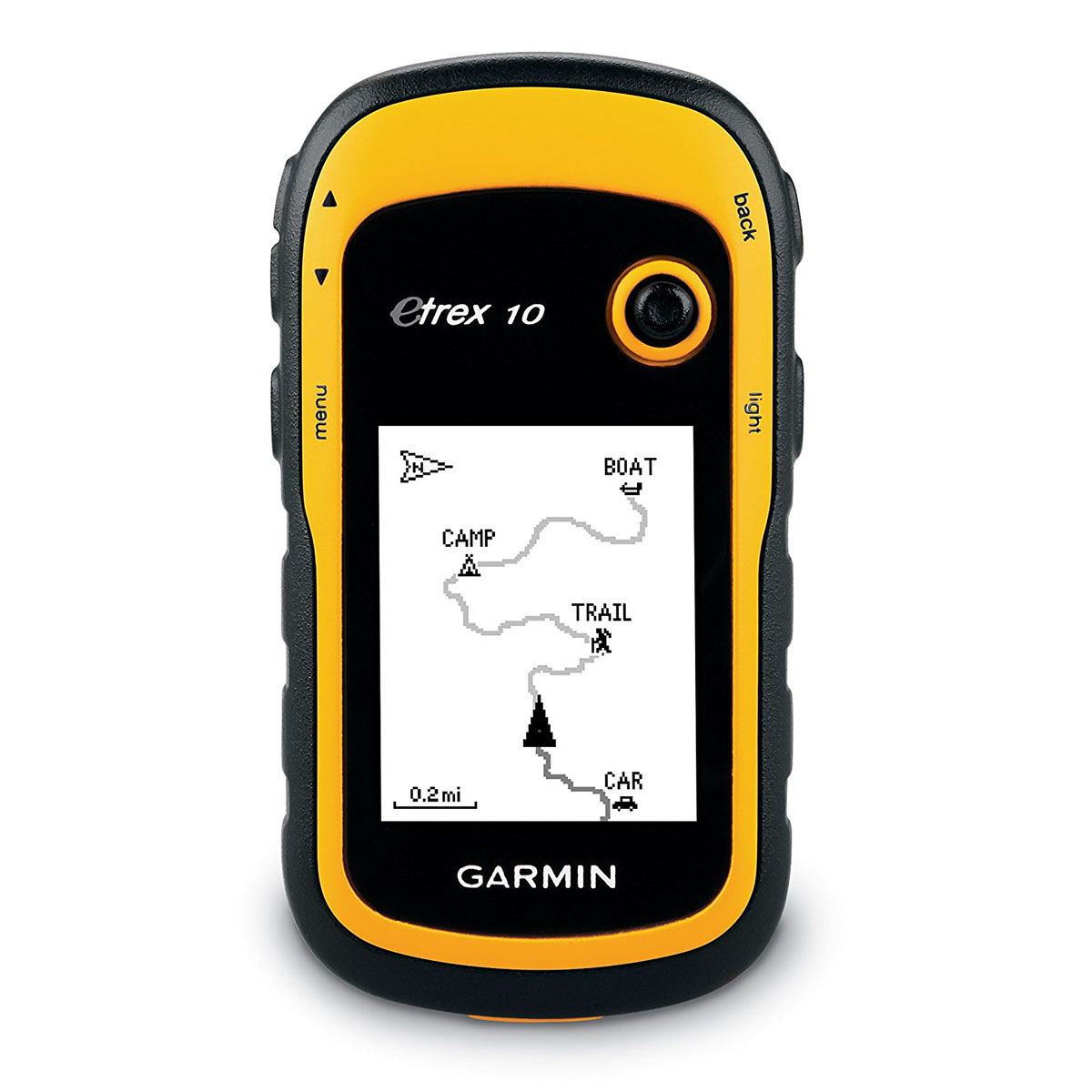
Garmin eTrex 10 Worldwide Handheld GPS Navigator
The Garmin eTrex 10 is pretty bare bones when it comes to a modern GPS, but it has all the features you would need in a bug out situation.
The Garmin Foretrex is another great GPS for all situations. You can see our review of the Garmin Foretrex 401 here.
Gloves
A pair of light durable leather or mechanics gloves make a great addition to a bug out bag.
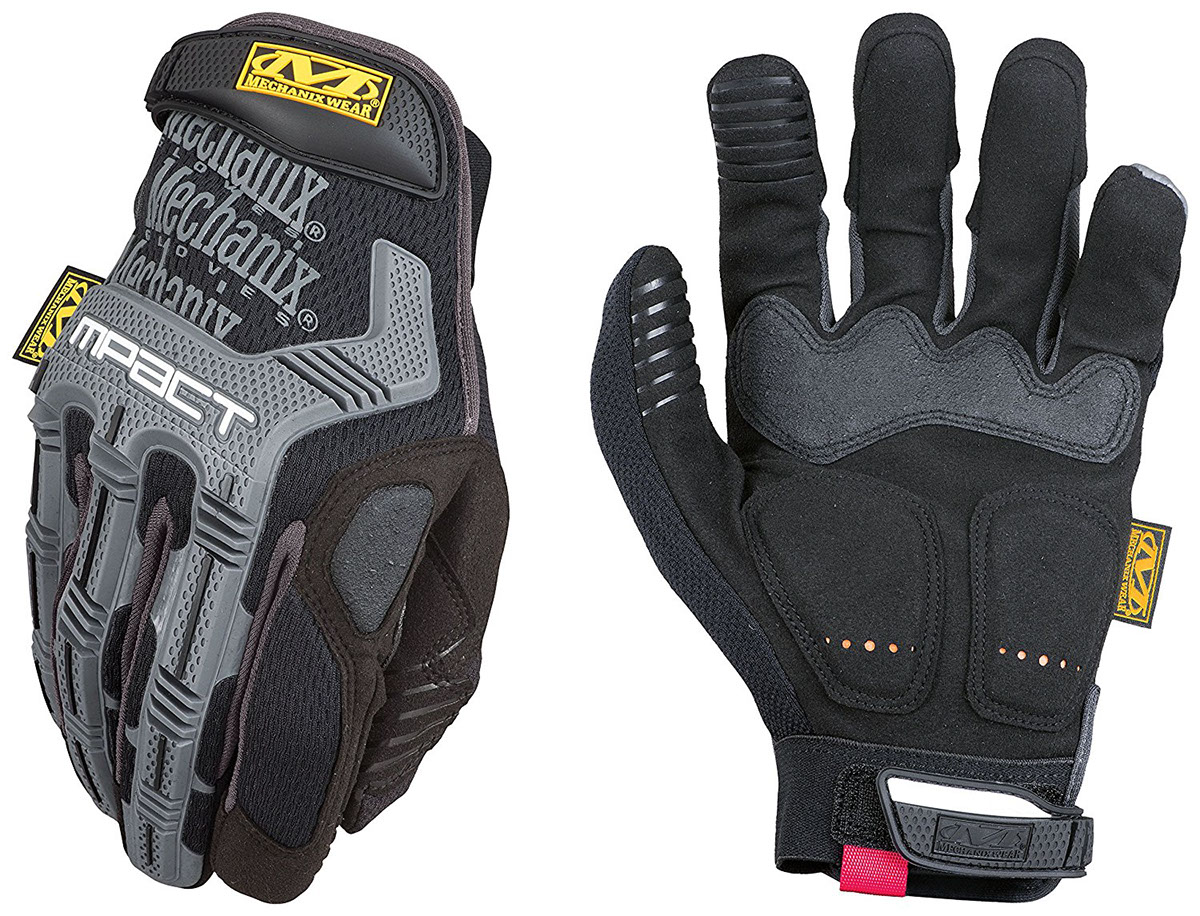
Mechanix Mpact Gloves
Mechanix Mpact Gloves are pretty nice. They’re light enough to give you a lot of dexterity and sturdy enough to stand up to pretty rigorous activity. The rubber coating on the knuckles and fingers really does help. I strongly recommend them.
Money
In a bug out situation, it’s a good bet that society probably has not completely collapsed. This means that your money will still have value and you can potentially use it to buy items that you need along the way.
Bills in small denominations make the most sense so you don’t have to overpay for an otherwise inexpensive item.
Identification
Having identification along with you will most likely make any encounters with the police or government go more smoothly.
Some form of identification could also be required if you decided to utilize emergency resources provided by a government agency like FEMA.
Electronics (Solar Panel / Rechargeable Batteries / Cell Phone)
We have quite a few things that need batteries on our list and so far we don’t really have anything to recharge them with. That’s about to change.
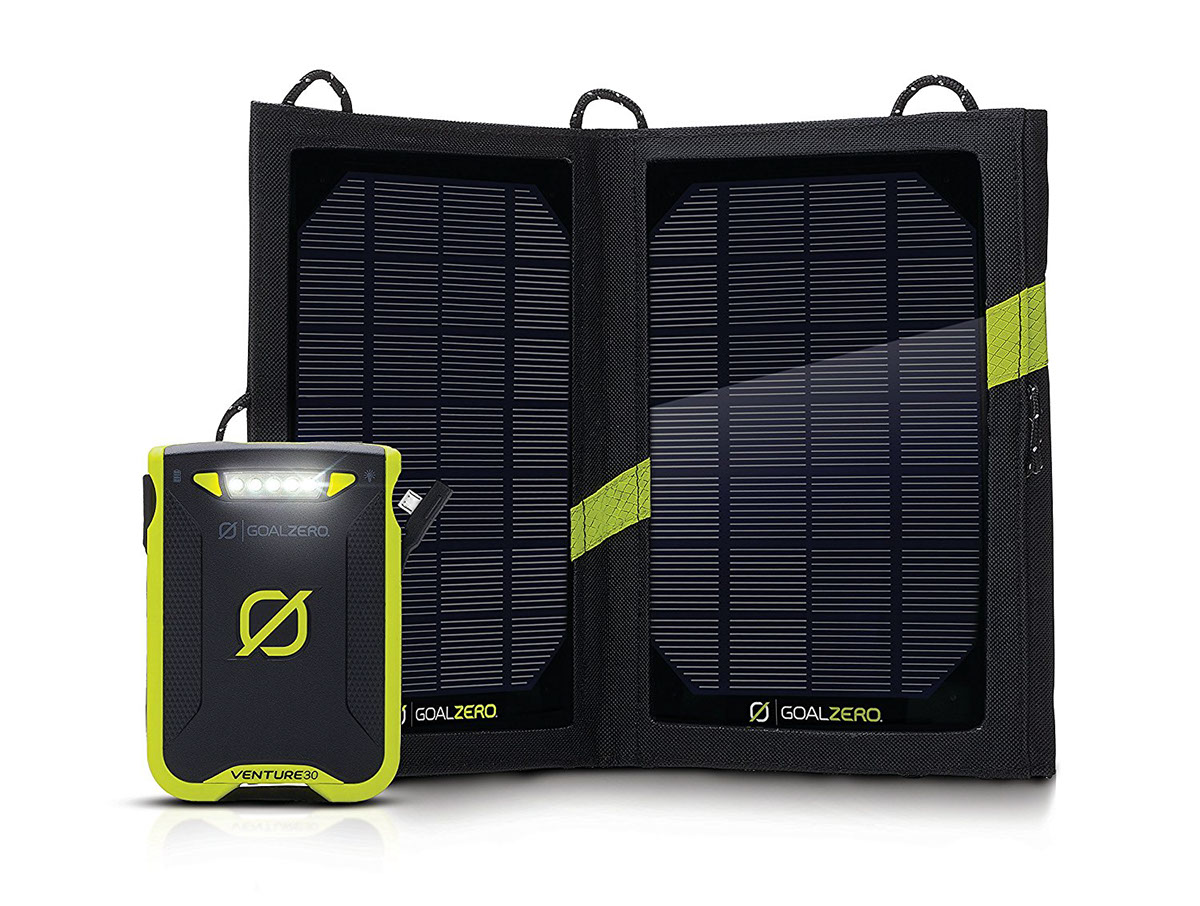
Goal Zero Venture 30 Solar Recharging Kit with Nomad 7 Solar Panel
The Goal Zero Venture 30 Solar Recharging Kit with Nomad 7 Solar Panel is a solar panel and battery pack. The battery pack gives you the ability to store the power that you gather during the day in order to charge electronics at night. You can also hang it off your bug out bag to charge the battery pack as you walk during the day.
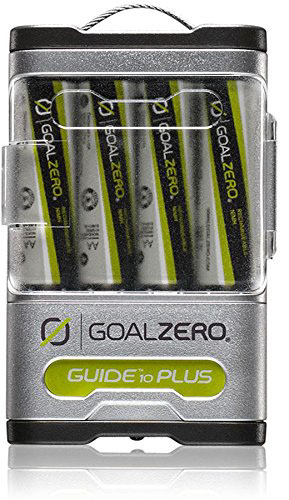
Goal Zero Guide 10 Plus Recharger
To charge AA and AAA batteries the Goal Zero Guide 10 is great. Just make sure that you have non-lithium rechargeable batteries. It won’t charge lithium batteries, even if they’re supposedly rechargeable.
A cell phone goes without saying. As long as the grid is up, your cell phone will continue to be an incredible asset to have. Don’t forget to add one to your bug out bag.
Other Items for Your Bug Out Bag
Multi-Tool – This is really a must-have for any survival kit. A good old fashioned Leatherman could be worth its weight in gold in a survival situation.
Sewing Kit – A small sewing kit is good for repairing rips and tears in clothing or equipment. I prefer to use steri-strips for wound closure and I don’t recommend just going to town sewing a wound closed unless you know what you’re doing. You can get a quick down and dirty lesson on sewing a wound closed here.
Fishing Kit – Adding a small fishing kit and a collapsible fishing pole to your bug out bag is a great idea if you’re near natural bodies of water.
Waterproof Bag – Waterproof bags are great. Some are so good that you can completely submerge them in water and still keep everything dry inside. Remember, anything that keeps water out can also keep water in. An empty waterproof bag makes an awesome way to collect water and should be a strong contender for a spot in your pack.
Emergency Radio – Staying up to date on whatever event forced you out of your home is extremely important. Most emergency radios allow you to listen to NOAA and AM/FM channels.
E-Tool – They’re often heavy, but they’re also a lifesaver if you need to do some digging.
Prybar – This could be a lifesaver for anyone bugging out from the city. Being able to gain access to a secured area could mean the difference between finding food and going hungry.
Lock Picks – Along the same lines as the pry bar. There are plenty of YouTube videos out there demonstrating how to pick locks. Bosnianbill is my favorite YouTuber for lock picking lessons.
Signal Mirror – They’re really light and are one of the best ways to signal to another person during the daytime.
Survival Whistle – Another good signaling device.
Duct Tape – Who doesn’t love this multi-use wonder? You can carefully unroll the duct tape and then re-roll it back onto itself to get it down to a manageable size.
Complete Emergency Kits
Mini Survival Kits
Mini survival kits can make a great addition to your bug out bag list. They make a great fall back in case you break something or forgot to add anything to your bug out bag.
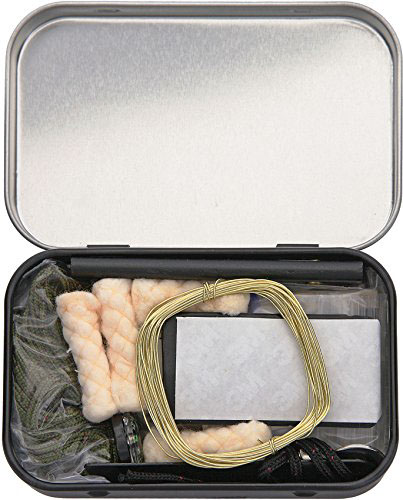
ESEE Mini Survival Kit
The ESEE Mini Survival Kit is one of the better kits of this type that I’ve seen. It covers almost everything you need in an Altoid sized tin. This kit could certainly fill in some gaps that you may have in your bug out bag.
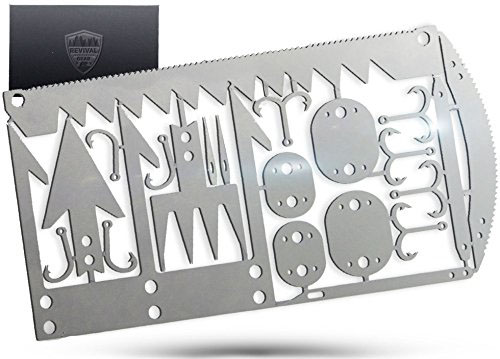
Revival Gear Survival Tool Card
This emergency survival card from Revival Gear looks like it could be useful as well. As a last resort, it’s definitely better than nothing.
You can also make your own mini-survival kit like this one.
Complete Bug Out Bags
Complete bug out bags are pre-made and can be purchased from some resellers. However, not all of them are created equal. The ones listed below provide a good value and come with almost everything you need.
This 4 Person Premium Family Emergency Survival Bag would be good for 1 or 2 people and this Wise Company 5 Day Emergency Bug Out Backpack should have everything you need for several days.
Wrapping up Your Bug Out Bag List
Ultimately it’s up to each of us to come up with what the best tools are for us and our families. By reading through this article, and tailoring your bug out bag list to your needs, you’ll be ready if you ever need to bug out.
Keep this in mind when making your bug out bag, everything that goes into it should help us get from point A to point B, gain food, water and shelter. If something doesn’t do one of those things then it doesn’t deserve a place with you when you bug-out.
Once you’ve completed a bug out bag list that makes sense for you, start by buying the most essential items…food, water, and shelter. Then branch out from there.
You can probably fill most of the missing items with things that you have lying around the house!
Make sure you like us on Facebook if you found this helpful.
Head over to our gear page for more informative prepping gear articles.




